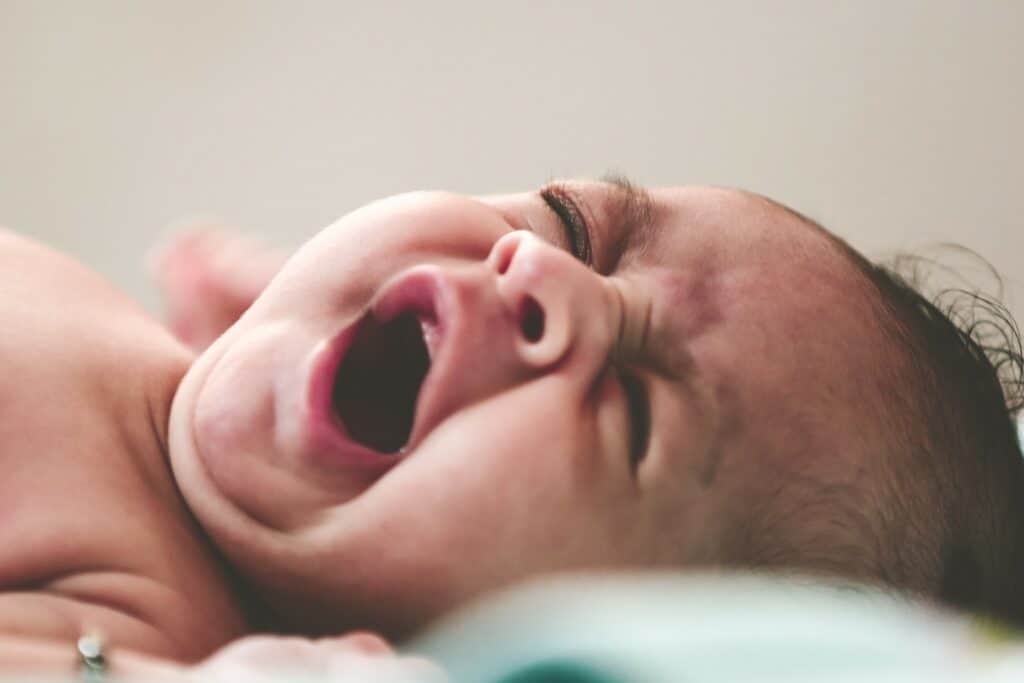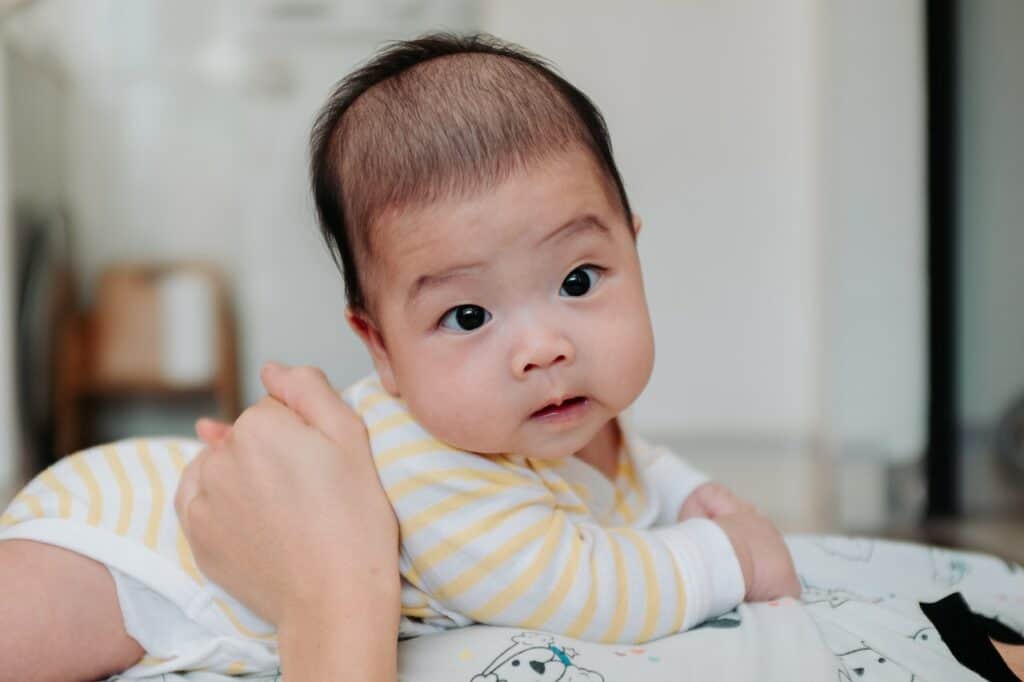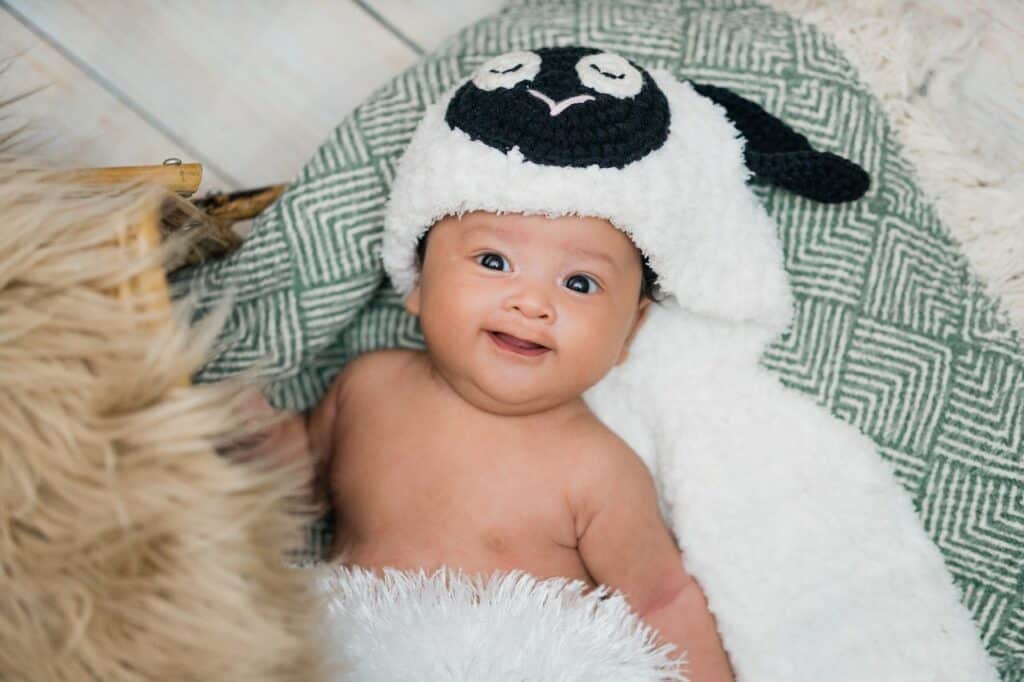Babies are born with a lot of physical features that continue to develop and change over time. One of the features that parents may be curious about is their baby’s eyebrows. When do babies develop eyebrows, and what factors influence their growth?
Eyebrows are a prominent facial feature that help to frame the eyes and express emotions. While babies are born with hair on their heads, they may not have eyebrows right away. The development of eyebrows can vary from baby to baby, but most babies will start to grow eyebrows within the first few months of life.
Several factors can influence the growth and appearance of a baby’s eyebrows. Genetics, hormones, and nutrition can all play a role in eyebrow development. Additionally, some babies may experience changes in their eyebrows over time, such as thinning or thickening. Understanding these factors can help parents better understand their baby’s eyebrows and what to expect as they grow.
Key Takeaways
- Most babies will start to develop eyebrows within the first few months of life.
- Genetics, hormones, and nutrition can all influence eyebrow development in babies.
- Some babies may experience changes in their eyebrows over time, such as thinning or thickening.
When Do Babies Develop Eyebrows
Babies are born with many features that will change as they grow and develop. One of these features is eyebrows. When do babies develop eyebrows? The answer is that eyebrows begin to form during the prenatal period, around the ninth week of gestation. However, they may not be visible until after birth.
Eyebrows are determined by genes, just like other physical features. The genes that determine eyebrow shape and thickness are inherited from the baby’s parents. This means that if one or both parents have thick eyebrows, the baby is likely to have them as well.
During pregnancy, the baby’s eyebrows start to grow. They are usually fully formed by the time the baby is born, but they may not be visible yet. This is because they are covered by a layer of fine hair called lanugo. Lanugo is a normal part of fetal development and usually falls off within a few weeks after birth.
Premature babies may not have fully developed eyebrows at birth. This is because they may not have had enough time in utero to develop fully. However, their eyebrows will continue to grow and develop over time.
For first-time parents, it is important to remember that every baby is different. Some babies may have visible eyebrows at birth, while others may not. It is also important to note that eyebrows may change in appearance as the baby grows and develops.
In conclusion, babies develop eyebrows during the prenatal period and they are usually fully formed by the time of birth. However, they may not be visible until after birth due to the presence of lanugo. Premature babies may not have fully developed eyebrows at birth, but they will continue to grow and develop over time. Finally, it is important to remember that every baby is different and eyebrows may change in appearance as the baby grows and develops.
Factors Influencing Eyebrow Development
Eyebrow development is a complex process that is influenced by various factors. Here are some of the key factors that can affect the growth and appearance of a baby’s eyebrows:

1. Genetics
Genetics plays a significant role in determining the thickness, shape, and color of a baby’s eyebrows. The genes that a baby inherits from their parents can influence the development of their eyebrows, as well as other physical features.
2. Hair Follicles and Hair Growth
Eyebrows, like all hair on the body, grow from hair follicles. The number and size of hair follicles can affect the density and thickness of a baby’s eyebrows. Hair growth is also influenced by hormones, which can vary from person to person.
3. Pigment and Eyebrow Color
The color of a baby’s eyebrows is determined by the amount of pigment in the hair. Dark hair has more pigment than light hair, which is why babies with dark hair often have darker eyebrows. However, the color of a baby’s eyebrows can also be influenced by genetic factors and ethnic background.
4. Ethnic Background
Different ethnic groups have different eyebrow shapes and thicknesses. For example, people of Asian descent tend to have straighter and thicker eyebrows, while people of European descent often have thinner and more arched eyebrows. Ethnic background can also influence the color of a baby’s eyebrows.
In conclusion, there are several factors that can influence the development of a baby’s eyebrows. While genetics and ethnic background play a significant role, hair follicles, hair growth, pigment, and eyebrow color also contribute to the appearance of a baby’s eyebrows.
Appearance of Baby’s Eyebrows
Babies have eyebrows, but they may not be visible at birth. It usually takes a few weeks for the eyebrows to become more defined. The appearance of baby’s eyebrows can vary depending on factors such as hair color, light, and age.
At birth, babies may have fine hair on their eyebrows that can be difficult to see. As they grow, the hair on their eyebrows may become more noticeable and defined. The color of the eyebrows can also vary, with babies having blonde, black, or even red eyebrows.
Eyebrows are an important feature of the face, and they can help to convey emotions and expressions. As babies grow and develop, their eyebrows will become more defined, which can help to enhance their facial features.
It is important to note that not all babies will have the same eyebrow appearance. Some babies may have more defined eyebrows than others, while some may have sparse or thin eyebrows. Additionally, the appearance of the eyebrows can change over time as the baby grows and their body hair changes.
In summary, babies have eyebrows that may not be visible at birth but will become more defined as they grow. The appearance of baby’s eyebrows can vary depending on factors such as hair color and light. As babies develop, their eyebrows will become more defined, which can help to enhance their facial features.
Changes in Baby’s Eyebrows Over Time
Babies are born with very little hair, including their eyebrows. At birth, a baby’s eyebrows may be barely visible or not visible at all. However, over time, a baby’s eyebrows will grow and change in various ways.

Growth and Length
As a baby grows, their eyebrows will also grow and become more visible. By the time a baby is a few months old, their eyebrows will likely be longer and more defined than they were at birth. However, the rate of growth can vary from baby to baby, and some babies may have more prominent eyebrows than others.
Size
The size of a baby’s eyebrows can also change over time. In some cases, a baby’s eyebrows may appear thicker or more bushy as they grow. However, this is not always the case, and some babies may have thinner or more sparse eyebrows.
Change in Color
The color of a baby’s eyebrows can also change over time. In some cases, a baby’s eyebrows may start out very light in color and become darker as they grow. However, this is not always the case, and some babies may have eyebrows that remain a light color even as they grow.
Fall Out
It is not uncommon for a baby’s eyebrows to fall out and then grow back in again. This is a natural part of the hair growth cycle, and it is nothing to be concerned about. However, if a baby’s eyebrows fall out and do not grow back, it may be a sign of a more serious underlying condition.
First Year
During a baby’s first year of life, their eyebrows will continue to grow and change. By the time a baby is a year old, their eyebrows will likely be much more prominent and defined than they were at birth. However, it is important to remember that every baby is different, and the rate of growth and change can vary from baby to baby.
In summary, a baby’s eyebrows will grow and change over time, becoming more visible and defined as the baby grows. The rate of growth and change can vary from baby to baby, and the color, size, and length of the eyebrows may also change over time. It is important to remember that these changes are a natural part of the baby’s development and are nothing to be concerned about.
Common Eyebrow Concerns in Babies
Babies are born with very little hair, including eyebrows. Parents may wonder when their baby’s eyebrows will start to grow in and what to expect during this process. While it is normal for babies to have sparse eyebrows, some parents may have concerns about their baby’s eyebrow growth or appearance.

1. Sparse or Thin Eyebrows
It is common for babies to have sparse or thin eyebrows, especially during the first few months of life. This is because the hair follicles on the eyebrows take longer to develop than those on the scalp. As a result, it may take several months for a baby’s eyebrows to become more noticeable.
2. Hair Loss
Hair loss on the eyebrows can occur in babies for a variety of reasons. For example, if a baby rubs their eyebrows frequently, the hair may fall out. Additionally, some medical conditions can cause hair loss on the eyebrows and other parts of the body.
3. Cradle Cap
Cradle cap is a common condition that can affect babies in the first few months of life. It causes a scaly, crusty rash on the scalp, and in some cases, on the eyebrows as well. While cradle cap is not harmful, it can be unsightly and may cause parents to worry.
4. Seborrheic Dermatitis
Seborrheic dermatitis is a skin condition that can cause redness, flaking, and itching on the scalp and other parts of the body, including the eyebrows. While the exact cause of seborrheic dermatitis is unknown, it is believed to be related to an overgrowth of yeast on the skin.
5. Redness and Irritation
Redness and irritation on the eyebrows can be caused by a variety of factors, including rubbing, scratching, and skin conditions like eczema. If a baby’s eyebrows appear red or irritated, it is important to keep the area clean and dry and to avoid using any harsh products that could further irritate the skin.
6. Safety Concerns
When it comes to eyebrow care for babies, safety is key. Parents should avoid using any products on their baby’s eyebrows unless recommended by a healthcare provider. Additionally, parents should never attempt to pluck or shape their baby’s eyebrows, as this can be painful and may cause infection.
In conclusion, while it is normal for babies to have sparse eyebrows, some parents may have concerns about their baby’s eyebrow growth or appearance. It is important to keep the area clean and dry and to avoid using any harsh products that could further irritate the skin. If parents have any concerns about their baby’s eyebrows, they should speak with their healthcare provider.
Natural Remedies for Eyebrow Growth
Many parents wonder when their baby’s eyebrows will start to grow in. While the timing varies from baby to baby, it’s generally safe to say that eyebrows will start to grow in between 3-6 months of age. However, some babies may take longer, and some may even be born with eyebrows already present.
If you’re looking to help thicken and promote eyebrow growth in your baby, there are several natural remedies that you can try. Here are a few:
Coconut Oil
Coconut oil is a popular natural remedy for promoting hair growth, including eyebrow growth. It contains fatty acids and vitamins that help to nourish hair follicles and promote healthy hair growth. To use coconut oil for your baby’s eyebrows, simply warm a small amount in your hands and gently massage it into their eyebrows.
Aloe Vera
Aloe vera is another natural remedy that can help to promote eyebrow growth. It contains nutrients and vitamins that help to nourish hair follicles and promote healthy hair growth. To use aloe vera for your baby’s eyebrows, simply apply a small amount of aloe vera gel to their eyebrows and gently massage it in.
Breast Milk
Breast milk is known for its many health benefits, and it can even help to promote eyebrow growth in babies. Breast milk contains proteins and nutrients that help to nourish hair follicles and promote healthy hair growth. To use breast milk for your baby’s eyebrows, simply apply a small amount to their eyebrows and gently massage it in.
Castor Oil
Castor oil is a popular natural remedy for promoting hair growth, including eyebrow growth. It contains fatty acids and vitamins that help to nourish hair follicles and promote healthy hair growth. To use castor oil for your baby’s eyebrows, simply apply a small amount to their eyebrows and gently massage it in.
Olive Oil
Olive oil is another natural remedy that can help to promote eyebrow growth. It contains vitamins and nutrients that help to nourish hair follicles and promote healthy hair growth. To use olive oil for your baby’s eyebrows, simply apply a small amount to their eyebrows and gently massage it in.
Overall, natural remedies can be a great way to help promote eyebrow growth in babies. However, it’s important to keep in mind that results may vary and it’s always best to consult with a doctor before trying any new treatments.
Role of Nutrition in Eyebrow Growth
Proper nutrition is essential for the growth and development of a baby. It is also important for the growth of eyebrows in infants. Nutrients like iron and vitamin E play a crucial role in eyebrow growth.

Iron is an essential mineral that helps in the production of hemoglobin, which carries oxygen to the cells in the body, including the hair follicles. Lack of iron in the diet can lead to hair loss, including eyebrows. Therefore, it is important to ensure that infants get enough iron in their diet. Iron-rich foods like meat, poultry, fish, beans, and fortified cereals can help meet the iron needs of infants.
Vitamin E is an antioxidant that helps protect the cells in the body from damage caused by free radicals. It also helps in the production of sebum, which is a natural moisturizer for the hair and scalp. Lack of vitamin E in the diet can lead to dry and brittle hair, including eyebrows. Foods rich in vitamin E include nuts, seeds, vegetable oils, and leafy green vegetables.
In addition to iron and vitamin E, a balanced diet that includes a variety of nutrients is important for overall health and growth. Breast milk or formula provides all the necessary nutrients for infants up to six months of age. After that, infants can start eating solid foods, including fruits, vegetables, whole grains, and lean proteins.
Overall, nutrition plays a crucial role in eyebrow growth in infants. Ensuring that infants get enough iron and vitamin E in their diet, as well as a variety of other nutrients, can help promote healthy eyebrow growth.
Interesting Facts About Baby’s Eyebrows
Babies are born with a lot of unique features, and their eyebrows are no exception. Here are some interesting facts about baby’s eyebrows that you may find fascinating:
- Peach Fuzz: When babies are born, they have a soft, fine hair called peach fuzz covering their eyebrows. This hair is usually shed within the first few months of life, and the eyebrows start to take shape.
- Vernix: Vernix is a white, waxy substance that covers a baby’s skin when they are born. This substance can also be found on a baby’s eyebrows, and it helps protect the skin from the amniotic fluid while in the womb.
- Facial Expressions: Babies are known for their adorable facial expressions, and their eyebrows play a big role in this. Even newborns can furrow their eyebrows and show expressions of surprise or confusion.
- Hair Texture: Just like adults, babies can have different hair textures. Some babies are born with thick, dark eyebrows, while others have light, wispy eyebrows.
- Sweat: Babies do sweat, but they don’t have fully developed sweat glands until they are a few months old. This means that their eyebrows may not get sweaty like an adult’s would.
- Preemies: Premature babies may not have fully developed eyebrows when they are born. This is because eyebrows usually develop in the third trimester of pregnancy.
- Sleepiness: When babies are sleepy, their eyebrows may droop, giving them a cute, sleepy look.
- Facial Hair: Some babies are born with facial hair, including eyebrows. This hair usually falls out on its own within a few weeks.
- Hair Strands: Each eyebrow hair grows from its own hair follicle, and the average person has about 250 hairs in each eyebrow.
Overall, baby’s eyebrows may seem like a small detail, but they play an important role in their facial expressions and development.
Related posts:
Frequently Asked Questions
When do babies develop eyebrows?
Babies typically begin to develop eyebrows during the second trimester of pregnancy. By the time they are born, most babies have at least some eyebrows. However, the thickness and darkness of their eyebrows can vary greatly.
When do babies’ eyebrows start to darken?
Babies’ eyebrows may start to darken anywhere from a few weeks to a few months after birth. The exact timeline can vary, but most babies’ eyebrows will darken over time.
Do babies have eyebrows when they are born?
Yes, most babies have at least some eyebrows when they are born. However, the thickness and darkness of their eyebrows can vary greatly.
Why are some babies’ eyebrows light in color?
The color of a baby’s eyebrows is determined by genetics. Some babies may have lighter eyebrows due to genetic factors, while others may have darker eyebrows.
When do babies’ eyebrows stop growing?
Babies’ eyebrows will continue to grow and develop throughout childhood. However, the rate of growth will slow down significantly after the first year of life.
Can lack of eyebrows and eyelashes be a problem for babies?
In some cases, a lack of eyebrows and eyelashes can be a sign of a medical condition. However, most babies will develop eyebrows and eyelashes naturally over time. If you have concerns about your baby’s eyebrow or eyelash development, it is important to speak with a healthcare provider.

Iesha is a loving mother of 2 beautiful children. She’s an active parent who enjoys indoor and outdoor adventures with her family. Her mission is to share practical and realistic parenting advice to help the parenting community becoming stronger.
